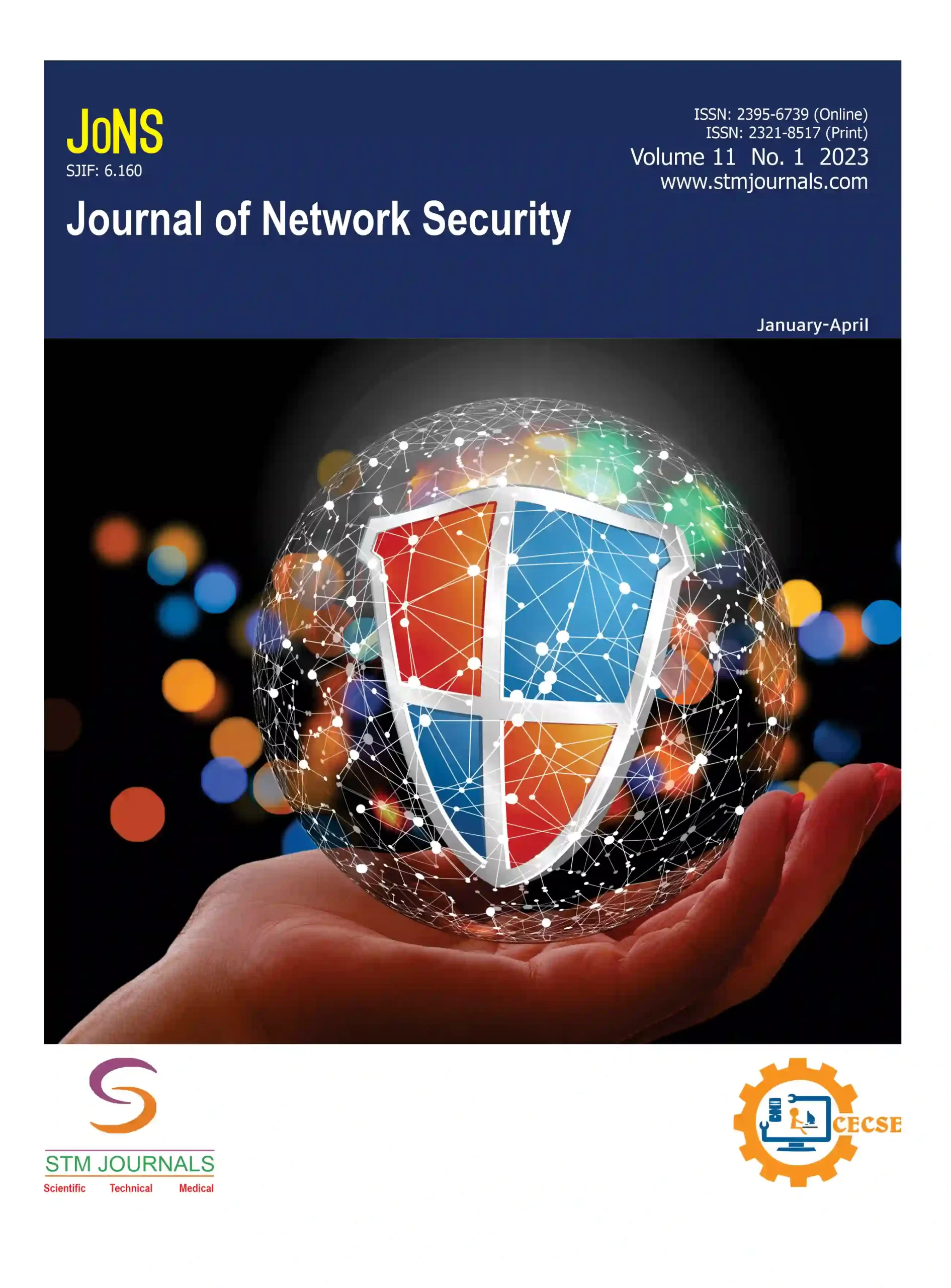
Shilpi Saxena,

Vicky Singh,

Rahul Mandal,

Mritunjay Kr. Ranjan,

Pradnya Janardhan Dongardive,
- Assistant Professor School of Computer Science and Engineering, Sandip University, Nashik Maharashtra India
- Student Computer Application (BCA), Sandip University, Nashik Maharashtra India
- Student Computer Application (BCA), Sandip University, Nashik Maharashtra India
- Assistant Professor School of Computer Science and Engineering, Sandip University, Nashik Maharashtra India
- Assistant Professor Department of Commerce, Ashoka Center for Business and Computer Studies, Nashik Maharashtra India
Abstract
This study surveyed aged 10 years and up to learn more about their online habits. In order to learn more about the online habits of this group, the survey asked questions regarding the frequency, duration, and motivations for respondents’ time spent online. The study also looked at high-risk behaviours like excessive screen time, increased social media use, and extended gaming sessions as possible indicators of problematic internet use. Indicators of internet addiction or reliance, such as a disregard for commitments in real life, emotional anguish when not online, and problems managing online use, were also analysed in the study. As an added goal, the research aimed to determine what motivates and drives children to engage in excessive internet use in order to shed light on what kinds of media, apps, or social networking sites are most appealing to children. The research aimed to discover how children’s internet use influences their school performance, health, and social and emotional growth. By achieving these aims, to shed light on the connection between internet use and addiction, giving actionable data that legislators, educators, parents, and medical professionals can utilise to address and mitigate the potential issues that may come from their children’s online use.
Keywords: Internet, cybersecurity, digital risks, online fraud, cyberbullying, cyber world
[This article belongs to Journal Of Network security(jons)]
References
- Geofrey Mwamba Nyabuto. The Internet and Social Media Contribution to Inclusivity and Exclusivity in Society. Int J Sci Res Eng Trends. 2023 Dec 27; 9(6): 1–10.
- Drăghici G. The Internet, Lifestyle and Society. European Proceedings of Educational Sciences. 2023 Apr 10; 160–167.
- Sinha S, Shrivastava A, Paradis C. A Survey of the Mobile Phone-Based Interventions for Violence Prevention Among Women. Adv Soc Work. 2020 Mar 25; 19(2): 493–517.
- Vuletić D, Milenković M, Đukić A. Cyberspace as a domain of conflict: The case of the United States – Iran and North Korea. Vojno delo. 2021; 73(1): 1–14.
- Asaad RR, Saeed VA. A Cyber Security Threats, Vulnerability, Challenges and Proposed Solution. Appl Comput J. 2022 Dec 29; 2(4): 227–44.
- Lafton T, Holmarsdottir HB, Kapella O, Sisask M, Zinoveva L. Children’s Vulnerability to Digital Technology within the Family: A Scoping Review. Societies. 2022 Dec 31; 13(1): 11.
- Zainuddin N, Daud M, Ahmad S, Maslizan M, Abdullah SAL. A Study on Privacy Issues in Internet of Things (IoT). 2021 IEEE 5th International Conference on Cryptography, Security and Privacy (CSP). 2021 Jan 8; 96–100.
- Yadav ErP, Mittal ErA, Yadav DrH. IoT: Challenges and Issues in Indian Perspective. 2018 3rd International Conference On Internet of Things: Smart Innovation and Usages (IoT-SIU). 2018 Feb; 1–5. Available from: https://ieeexplore.ieee.org/document/8519869/figures
- Andrea I, Chrysostomou C, Hadjichristofi G. Internet of Things: Security vulnerabilities and challenges. 2015 IEEE Symposium on Computers and Communication (ISCC). 2015 Jul; 180–187. Available from: https://ieeexplore.ieee.org/abstract/document/7405513/authors#authors
- Rachit, Bhatt S, Ragiri PR. Security trends in Internet of Things: a survey. SN Appl Sci. 2021 Jan; 3(1): 121.
- Ahmed E, Islam A, Ashraf M, Chowdhury AI, Rahman MM. Internet of Things (IoT): Vulnerabilities, Security Concerns and Things to Consider. IEEE Xplore, 2020 11th International Conference on Computing, Communication and Networking Technologies (ICCCNT). 2020; 1–6. Available from: https://ieeexplore.ieee.org/document/9225283
- Mammen AS, Patrick HA. Demographics Influence on Faculty Perception towards Work Environment: a Study of Kerala Business Schools. Adarsh J Manag Res. 2015 Mar 1; 8(1): 9–17.
- Abiodun OI, Abiodun EO, Alawida M, Alkhawaldeh RS, Arshad H. A Review on the Security of the Internet of Things: Challenges and Solutions. Wirel Pers Commun. 2021 Mar 6; 119(3): 2603–2637.
- Saini K, Rupesh Kumar Mishra, Kavita Bhati, Sumreen Kawoosa. Social media based linking approach for finding the effectiveness of the social issues. 2016 IEEE International Conference on Computing, Communication and Automation (ICCCA), Greater Noida, India. 2016 Apr 1; 7–12.
- Arif Md. Sattar, Mritunjay Kr. Ranjan, Singh G. Social, Emotional and Ethical (SEE) Attributes, Which Configures Our Bioinformatics Systems to Activate the Hidden Forces to Shape Human Decisions. In: Nature-Inspired Intelligent Computing Techniques in Bioinformatics. Studies in Computational Intelligence. Singapore: Springer; 2022 Nov 1; 175–202.
- Conti M, Passarella A. Online Social Networks and Media. Online Soc Netw Media. 2017 Jun; 1: iii–vi.
- Boyle AM, O’Sullivan LF. Staying Connected: Computer-Mediated and Face-to-Face Communication in College Students’ Dating Relationships. Cyberpsychol Behav Soc Netw. 2016 May; 19(5): 299–307.
- Hern M, Johal A. O My Friends, There is No Friend. New Ecology. Vol. 9. Bielefeld: Transcript Verlag; 2024.
- Al-rahmi WM, Zeki AM, Alias N, Saged AA. The Impact of Using social media for Teaching and Learning in Post-secondary Institutes. The Anthropol. 2017 Jul 3; 29(1): 8–18.
- Rodríguez-Castro Y, Martínez-Román R, Alonso-Ruido P, Adá-Lameiras A, Carrera-Fernández MV. Intimate Partner Cyberstalking, Sexism, Pornography, and Sexting in Adolescents: New Challenges for Sex Education. Int J Environ Res Public Health. 2021 Feb 23; 18(4): 2181. Available from: https://pubmed.ncbi.nlm.nih.gov/33672240/

Journal Of Network security
| Volume | 12 |
| Issue | 01 |
| Received | March 5, 2024 |
| Accepted | March 8, 2024 |
| Published | April 4, 2024 |

